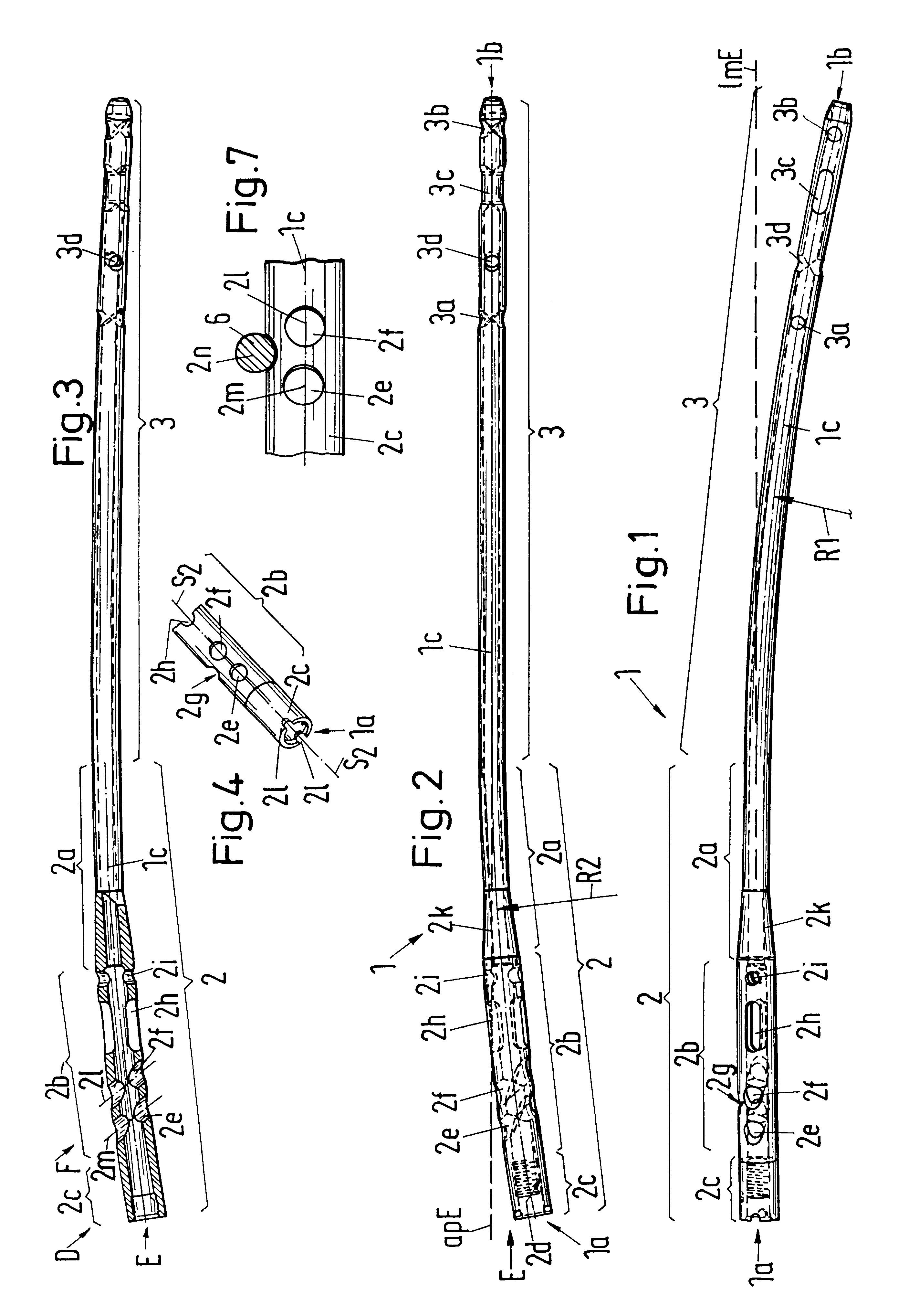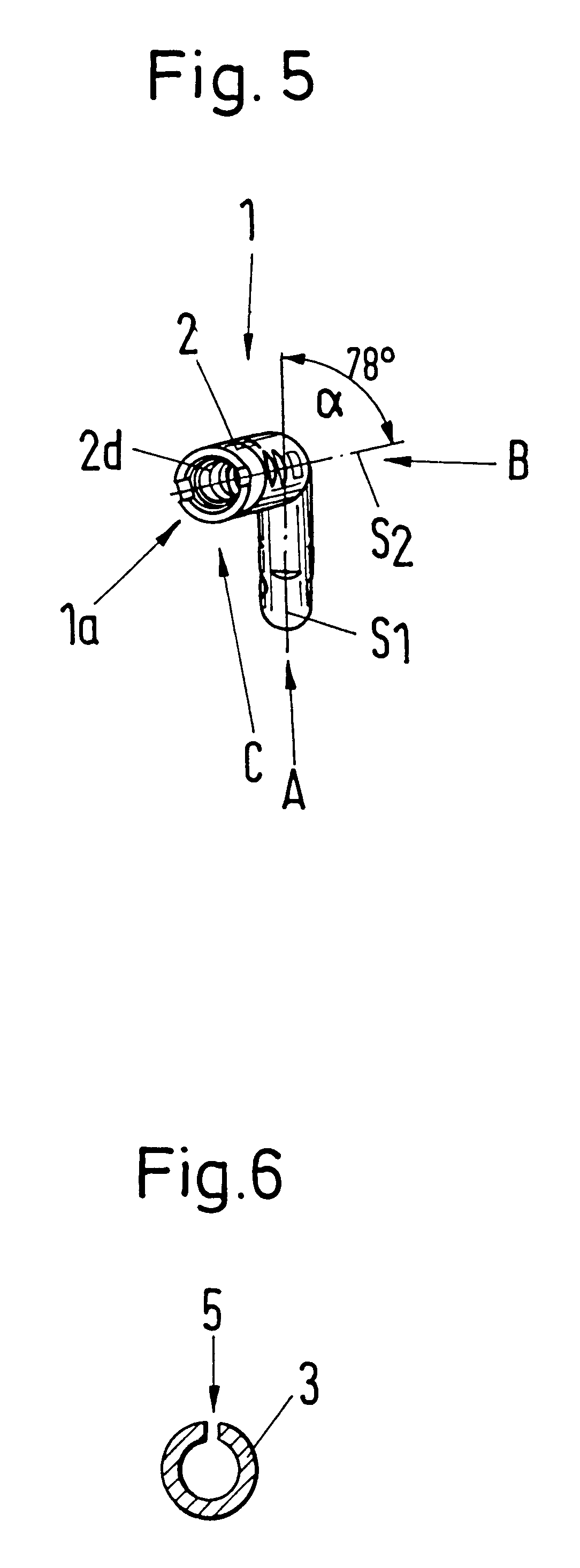Locking nail for the repair of femur shaft fractures
- Summary
- Abstract
- Description
- Claims
- Application Information
AI Technical Summary
Benefits of technology
Problems solved by technology
Method used
Image
Examples
Embodiment Construction
The locking nail 1 in accordance with FIG. 1 is formed in a single piece and consists of a proximal nail section 2 and a distal nail section 3 adjoining at the latter. Starting from the proximal end 1a of the locking nail 1 the proximal nail section 2 comprises a thread section 2c extending in a straight line and having an inner thread 2d, adjoining thereat a securing section 2b which has a transverse bore 2i, an oval transverse bore 2h and two inclined bores 2e, 2f, and adjoining thereat a transition section 2a which extends conically contracting to the distal nail section 3. The surface of the securing section 2b has a groove 2g extending parallel to the inclined bores 2e, 2f. Depending on the fracture, bone screws can bores 2e, 2f and / or the groove 2g in order to secure the femur head. For this purpose an aiming device or a hammering-in tool is preferably used which is temporarily screwed into the inner thread 2d of the thread section 2c when the locking nail 1 is inserted into t...
PUM
 Login to View More
Login to View More Abstract
Description
Claims
Application Information
 Login to View More
Login to View More - R&D
- Intellectual Property
- Life Sciences
- Materials
- Tech Scout
- Unparalleled Data Quality
- Higher Quality Content
- 60% Fewer Hallucinations
Browse by: Latest US Patents, China's latest patents, Technical Efficacy Thesaurus, Application Domain, Technology Topic, Popular Technical Reports.
© 2025 PatSnap. All rights reserved.Legal|Privacy policy|Modern Slavery Act Transparency Statement|Sitemap|About US| Contact US: help@patsnap.com



